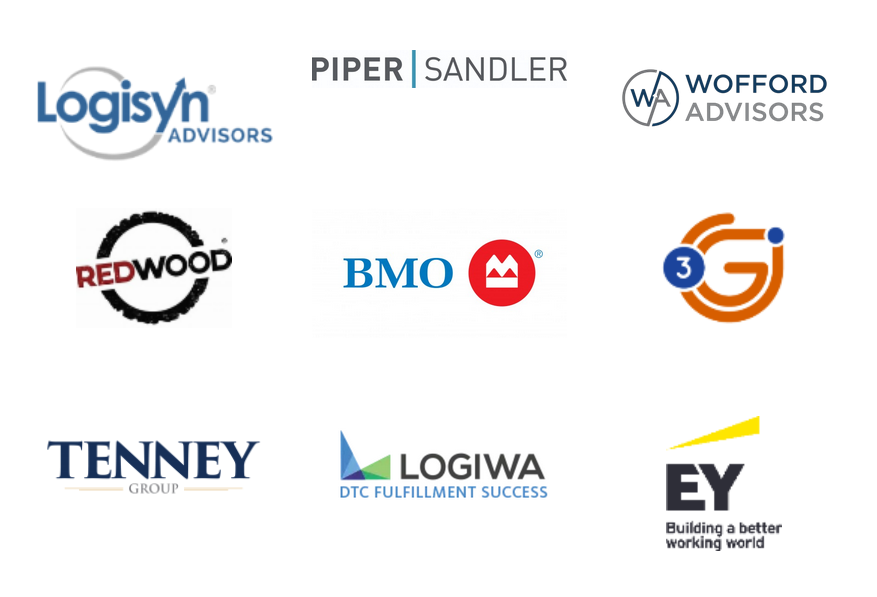Key Takeaways from the
3PL Value Creation North America Summit 2022
|
|

Global View and International Transportation Management
Global logistics costs were $10.4 trillion in 2021. 3PL revenues represent about 14% of logistics costs at $1.5 trillion. By 2025, 3PLs are expected to make up close to 15% of the global logistics spend due to continued and increased outsourcing of logistics functions to 3PLs.
Panelists discussed how manufacturing is migrating from China to Southeast Asia (chiefly Vietnam, Malaysia, and Cambodia) and Eastern Europe. They also highlighted concerns with chassis, trailers, and intermodal containers “floating warehouses” continuing to be tied up due to warehouses being full.
The Withhold Release Order (WRO) tariff act (on the prohibition of importation of goods determined to be minded, produced, or manufactured, in whole or in part, by the use of forced labor, including prison labor, forced labor, or indentured child labor) continues to be an issue. Some cargo is being detained for 6-9 months or more.
Domestic Transportation Management and Freight Brokerage Automation
3PL brand positioning still matters. Some customers will go from one 3PL brand to another, within the same parent organization, because they perceive the service will be different due to that 3PLs brand positioning in the marketplace.
Dry van spot rates and demand have come back down closer to the five-year average. General freight volume is currently muted and rates for most modes are down significantly from the first half of 2022. More historically normal transportation rates and demand levels should progress into 2023.
Many discussed the negative impact AB-5 could have on the industry. It could lead to a stronger driver shortage and increase issues for last-mile deliveries.
Hiring and access to talent continues to be tough especially in Domestic Transportation Management (DTM) where it’s hard to find good freight brokers, and Value-Added Warehousing and Distribution (VAWD) for forklift drivers and frontline labor and supervisors. More investments are being made in automation and robots to augment labor supply. 3PLs are pushing for longer contracts to cover investments in automation and technology. 3PLs in all segments with contractual business will fare better given a potential recession and economic uncertainty than spot market players.
For DTM 3PLs, automating the front and back offices to manage as many loads per person per day is a priority. Using proprietary systems or available off-the-shelf technologies when negotiating upfront pricing, performing digital freight matching, and automating load booking is driving newfound efficiencies.
Value-Added Warehousing & Distribution
VAWD will continue to do well given the general lack of warehousing space, which is nearing a critical level in the cold chain, and ongoing growth in e-commerce fulfillment and last-mile delivery.
A lot of shippers we work with are examining their supply chain networks and providers to improve inventory management and on-time delivery performance. We anticipate continued focus on supply chain network flexibility and warehouse optimization.
Multi-client warehousing square footage in the U.S. surpassed dedicated space due to e-commerce in 2021. Multi-client space grew at a CAGR rate of 25% from 2016 to 2021 and accounted for over 50% of the space in the U.S.
E-commerce growth is expected to continue as companies outsource versus building internal fulfillment operations.
Amazon has done a great job but is limited on the big and bulky side of the business.
Technology and Innovation
Panelists agreed that technology allows 3PLs to focus humans where it brings the most value to customers. It’s important for 3PLs to relay this messaging down to the employee level. Technology can eliminate some of the repetitive tasks, while allowing staff to focus on what is important.
The importance of data analytics continues to grow. It is included on most large 3PLs technology roadmap.
More data-rich, strategic conversations are occurring than technology-related ones at the shipper level.
Merger and Acquisition Landscape
There were an astounding 25 3PL M&A transactions with purchase prices over $100 million in 2021 and 14 through July of 2022.
In the later half of 2022, private equity deal volume cooled down due to interest rate hikes, inflation, political risk overseas, and economic uncertainty. PEs are still looking to invest in 3PLs which compliment other platform investments. When reviewing the Top 50 DTM 3PLs, the vast majority have received some PE investment.
3PL valuations have become more complex given the extraordinary growth over the past two years. Strategic buyers are now looking at EBITDA expectations over the next few years versus focusing on trailing 12-month results to value deals. Panelists noted that it is hard to gauge risk with the “bump” in revenues experienced due to COVID and the related stimulus. The next 12-18 months will tell if investments made were sustainable.
If you would like information about our 2023 events, please reach out to us here.
